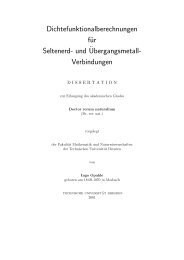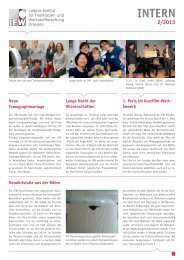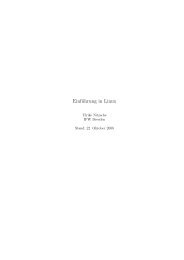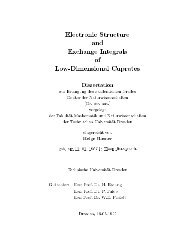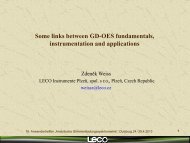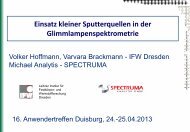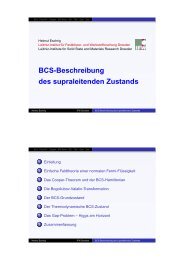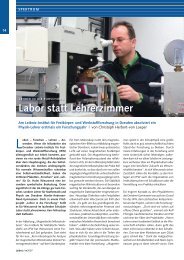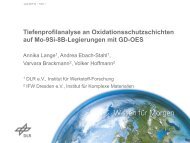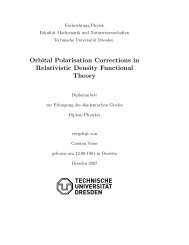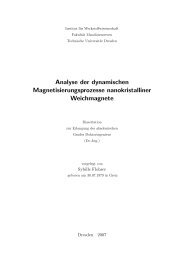ALBERTO BOLLERO REAL
ALBERTO BOLLERO REAL
ALBERTO BOLLERO REAL
Create successful ePaper yourself
Turn your PDF publications into a flip-book with our unique Google optimized e-Paper software.
3.2 Wohlfarth’s relation and Henkel plot<br />
can help to clarify the nature of the magnetisation processes. J d r (H m ) is the remanence after<br />
application of a reverse field, -H m , to the saturated sample; J r is the remanence of the<br />
material, measured after saturation (H m → ∞); J m r (H m ) is the remanence after application<br />
and removal of the maximum field H m to a thermally demagnetised sample. Measurements<br />
of these quantities are shown in Fig. 3.4 for a typical exchange-coupled two-phase<br />
nanocomposite magnet.<br />
J r<br />
J rd<br />
(H m<br />
)<br />
J rm<br />
(H m<br />
)<br />
Fig. 3.4: First magnetisation and demagnetisation curves for an exchange-coupled twophase<br />
composite magnet (Fe 3 B / Nd 2 Fe 14 B); (adapted from Schneider et al [45]).<br />
However, some important requirements must be considered for the validity of<br />
Wohlfarth’s relation: the system must consist of an assembly of non-interacting<br />
magnetically uniaxial single-domain particles and the sample must be initially in the<br />
thermally demagnetised state. Thus, a plot of J m r (H m )/J r vs. J d r (H m )/J r would result in a<br />
straight line as that shown in Fig. 3.5 for a system where the validity requirements are<br />
verified. This is the so-called “Henkel-plot” [47] which is a simple and elegant way of<br />
presenting Wohlfarth’s relation independent of the applied magnetic field. However,<br />
exchange-coupling implies interactions between particles and, as a consequence, a<br />
deviation from that linear behaviour as it can be seen in Fig. 3.5.<br />
21



